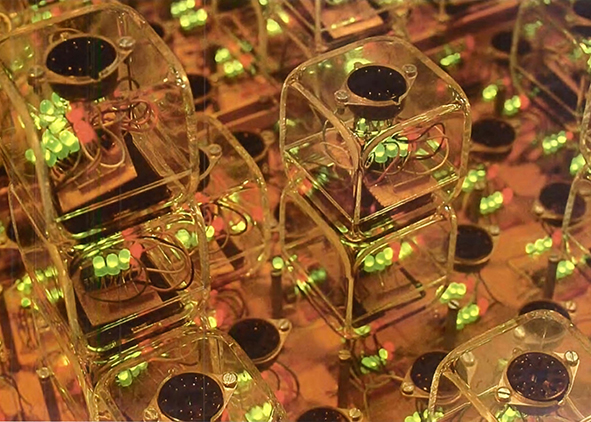Dialettica analogico-digitale nel progetto di architettura. Per rinnovate ipotesi di metodo
DOI:
https://doi.org/10.19229/2464-9309/1052021Parole chiave:
analogico, digitale, continuo, discreto, progetto di architetturaAbstract
La dicotomia tra analogico e digitale influenza i metodi di progetto, di produzione, di costruzione, nonché gli orizzonti formali dell’architettura. Questa dicotomia è apparentemente legata solo alla situazione contemporanea in cui l’architettura è pensata, costruita, gestita in modi sempre più informatizzati e di conseguenza è allontanata dai suoi aspetti più concreti. Tuttavia, una profonda comprensione dei significati di analogico e digitale rileva un rapporto dialettico a cui si può guardare per rinnovare aspetti di metodo del progetto di architettura.
Downloads
##plugins.generic.articleMetricsGraph.articlePageHeading##
Riferimenti bibliografici
AIA – American Institute of Architects (2020), The Business of Architecture – Firm Survey Report. [Online] Available at: aia.org/resources/6151-firm-survey-report [Accessed 17 September 2021].
Cache, B. (1995), Earth moves – The furnishing of territories, The MIT Press, Cambridge (MA).
Canestrino, G. (2021), “Considerations on Optimization as an Architectural Design Tool”, in Nexus Network Journal, vol. 23, pp. 919-931. [Online] Available at: doi.org/10.1007/s00004-021-00563-y [Accessed 14 October 2021].
Carpo, M. (2017), The Second Digital Turn – Design Beyond Intelligence, The MIT Press, Cambridge (MA).
Carpo, M. (ed.) (2013), The Digital Turn in Architecture 1992-2012, Wiley, Hoboken.
Carpo, M. (2011), The Alphabet and the Algorithm, The MIT Press, Cambridge (MA).
De Fusco, R. (2001), “Internet non s’addice all’architettura”, in Op.Cit., n. 112, pp. 5-13. [Online] Available at: opcit.it/cms/?p=1753 [Accessed 19 October 2021].
De Landa, M. (2002), “Deleuze and the use of the genetic algorithm in architecture”, in Architectural Design, vol. 72, issue 1, pp. 9-13.
Deleuze, G. (1993), The Fold – Leibniz and the Baroque, The Athlone, London.
Fankhänel, T. and Lepik, A. (eds) (2020), The Architecture Machine – The Role of Computers in Architecture, Birkhäuser, Basil.
Frazer, J. (1995), An Evolutionary Architecture, Architectural Association, London.
Gerber, R. (2014), BIM Design – Realising the Creative Potential of Building Information Modelling, Wiley, Hoboken.
Gershenfeld, N., Carney, M., Jenett, B., Calisch, S. and Wilson, S. (2015), “Macrofabrication with Digital Materials – Robotic Assembly”, in Architectural Design, vol. 85, issue 5, pp. 122-127. [Online] Available at: doi.org/10.1002/ad.1964 [Accessed 16 October 2021].
Leach, N. (2019), “There Is No Such Thing as a Digital Building – A Critique of the Discrete”, in Architectural Design, vol. 89, issue 2, pp. 136-141. [Online] Available at: doi.org/10.1002/ad.2423 [Accessed 16 October 2021].
Leach, N. (2018), “We Have Never Been Digital”, in Anzalone, P., del Signore, M. and Wit, A. J. (eds), Recalibration – On Imprecision and Infidelity – Proceedings of the 38th Annual Conference of the Association for Computer Aided Design in Architecture, IngramSpark, pp. 20-29.
Longo, G. O. (2016), “La nascita della filosofia digitale”, in Doppiozero, 27/12/2016. [Online] Available at: doppiozero.com/materiali/la-nascita-della-filosofia-digitale [Accessed 17 October 2021].
Lynn, G. (ed.) (2013), Archaeology of the Digital, Sternberg Press, Berlin.
McLuhan, M. (2015), Gli strumenti del comunicare, Il Saggiatore, Milano.
Pask, G. (1969), “The Architectural Relevance of Cybernetics”, in Architectural Design, issue 7/6, pp. 494-496.
Prestinenza Puglisi, L. (1998), HyperArchitettura – Spazi nell’età dell’elettronica, Testo & Immagine, Torino.
Purini, F. (2018), “Il BIM – Un parere in evoluzione”, in Op. Cit., n. 162, pp. 5-16. [Online] Available at: opcit.it/cms/?p=1409 [Accessed 24 October 2021].
Purini, F. (2003), “Digital Divide”, in Sacchi, L. and Unali, M. (eds), Architettura e Cultura Digitale, Skira, Milano, pp. 87-96.
Quaroni, L. (2001), Progettare un edificio – Otto lezioni di architettura, Edizioni Kappa, Roma.
Retsin, G. (2019), “Discrete Architecture in the Age of Automation”, in Architectural Design, vol. 89, issue 2, pp. 6-13. [Online] Available at: doi.org/10.1002/ad.2406 [Accessed 16 October 2021].
Retsin, G. (2016), “Discrete and Digital – A Discrete Paradigm for Design and Production”, in Bieg, K. (ed.), 2016 TxA Emerging Design + Technology Conference Proceedings, Texas Society of Architects, pp. 82-96. [Online] Available at: texasarchitects.org/emergingdesign/ [Accessed 24 October 2021].
Rocker, I. M. (2006), “Calculus-based form – An interview with Greg Lynn”, in Architectural Design, vol. 76, issue 4, pp. 88-95. [Online] Available at: doi.org/10.1002/ad.298 [Accessed 17 September 2021].
Saggio, A. (2007), Introduzione alla rivoluzione informatica in architettura, Carocci, Roma.
Simmel, G. (2020), “Ponte e porta”, in Carnevali, B. and Pinotti, A. (eds), George Simmel – Stile Moderno – Saggi di estetica sociale, Einaudi, Torino, pp. 321-328.
Thompson, D. W. (1945), On growth and form, University Press, Cambridge.
Ungers, O. M. (1982), Architettura come tema | Architecture as theme, Electa, Milano.
Zevi, B. (1973), Il linguaggio moderno dell’architettura – Guida al codice anticlassico, Einaudi, Torino.

##submission.downloads##
Pubblicato
Come citare
Fascicolo
Sezione
Licenza
AGATHÓN è pubblicata sotto la licenza Creative Commons Attribution License 4.0 (CC-BY).
License scheme | Legal code
Questa licenza consente a chiunque di:
Condividere: riprodurre, distribuire, comunicare al pubblico, esporre in pubblico, rappresentare, eseguire e recitare questo materiale con qualsiasi mezzo e formato.
Modificare: remixare, trasformare il materiale e basarti su di esso per le tue opere per qualsiasi fine, anche commerciale.
Alle seguenti condizioni
Attribuzione: si deve riconoscere una menzione di paternità adeguata, fornire un link alla licenza e indicare se sono state effettuate delle modifiche; si può fare ciò in qualsiasi maniera ragionevole possibile, ma non con modalità tali da suggerire che il licenziante avalli l'utilizzatore o l'utilizzo del suo materiale.
Divieto di restrizioni aggiuntive: non si possono applicare termini legali o misure tecnologiche che impongano ad altri soggetti dei vincoli giuridici su quanto la licenza consente di fare.
Note
Non si è tenuti a rispettare i termini della licenza per quelle componenti del materiale che siano in pubblico dominio o nei casi in cui il nuovo utilizzo sia consentito da una eccezione o limitazione prevista dalla legge.
Non sono fornite garanzie. La licenza può non conferire tutte le autorizzazioni necessarie per l'utilizzo che ci si prefigge. Ad esempio, diritti di terzi come i diritti all'immagine, alla riservatezza e i diritti morali potrebbero restringere gli usi del materiale.


















































































